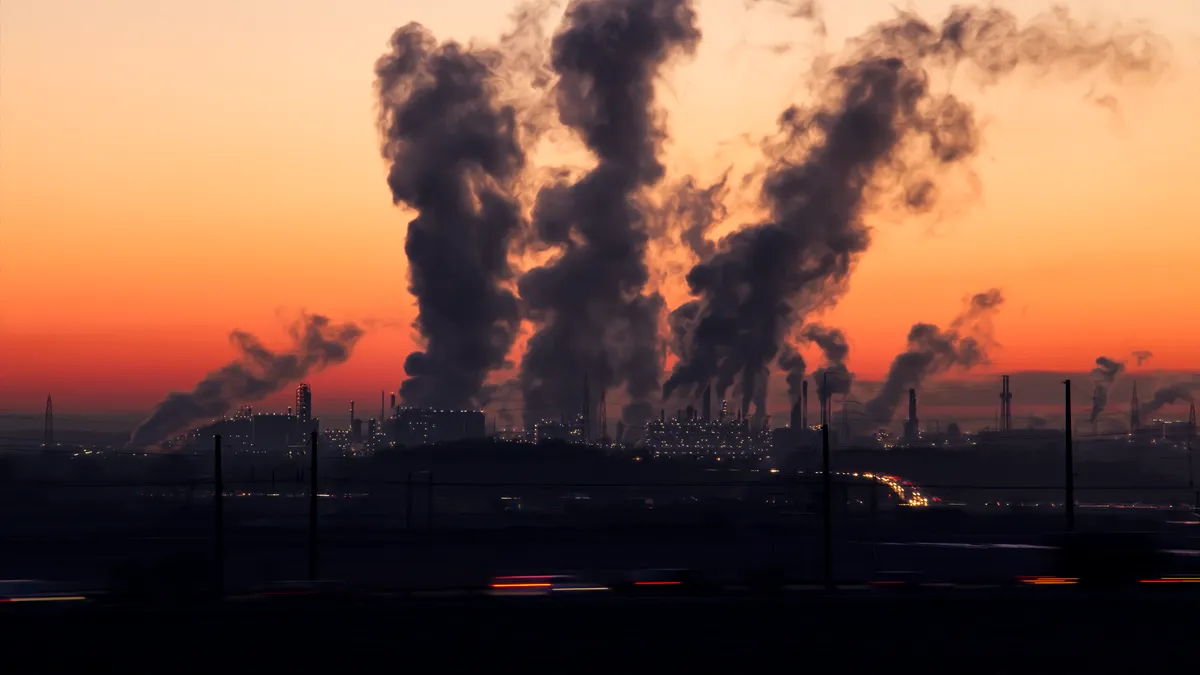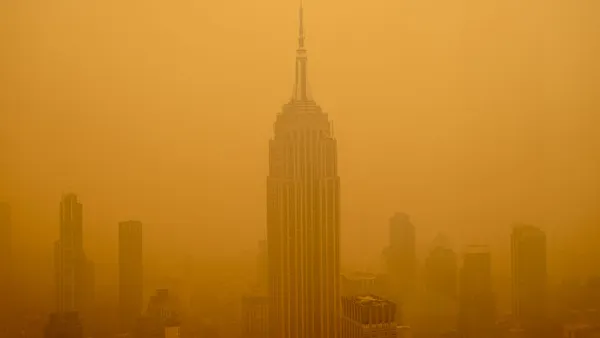Dive Brief:
- About five in 10 people, or 45.8% of the U.S. population, live in an area with unhealthy ozone or particle pollution, according to the American Lung Association's 2020 "State of the Air" report.
- Los Angeles once again ranked as the city with the worst ozone pollution, a ranking it has maintained for the past 20 years of the report's 21 year-history. Fellow California cities Visalia, Bakersfield, Fresno, Sacramento and San Diego followed in rank — the same cities to top the list in 2019.
- Bakersfield, CA, held onto its slot as the most-polluted city for year-round particle pollution, followed by California neighbors of Fresno, Visalia, Los Angeles and San Jose.
Dive Insight:
The past three years have shown troubling trends for air quality. Last year's "State of the Air" report indicated that 141.1 million people lived somewhere with poor quality, compared to 133.9 million in 2018’s report and 125 million in 2017’s report.
This year's report also found that "far more" people experienced unhealthy ozone pollution in 2016-2018 due to increased heat as three of the five warmest years on record were documented in this report.
To improve air quality, communities should adopt smart development plans that encourage people to walk or bike more and commute less in motor vehicles. Some areas are also moving toward the idea of natural gas or electric power equipment in their municipal fleets, the American Lung Association's Director of Environmental Health Kevin Stewart told Smart Cities Dive.
The current pandemic could also heed lessons for cities on the future of air quality. China, for example, saw a 25% decrease in carbon dioxide emissions two weeks after the Chinese New Year compared to that same timeframe in 2019. And NASA and the European Space Agency satellites have already witnessed "significant decreases" in nitrogen dioxide across the country.
"We may discover some things … we’re dealing with now that may be worthwhile maintaining in the future as appropriate ways to do work because it does help save on air pollution," Stewart said. However, he emphasized that shutting down commerce and other activities is not a way to solve the air pollution problem.
The consequences of air pollution have long been a source of concern before the pandemic, namely in regards to climate change.
"We know what's causing emissions, and we shouldn't have to shut down our whole economy to reduce emissions," Jacqueline Klopp, co-director of the Center for Sustainable Urban Development at Columbia University, previously told Smart Cities Dive. "We really should be changing the structure of our economy… what's amazing is how much pollution we accept, and how much of a public health cost it is that we seem to accept."
That public health cost could be devastating. A new report from Harvard University suggests that areas in the U.S. with high levels of air pollution prior to the coronavirus outbreak are more likely to see people die from COVID-19. If Manhattan in New York, for example, had lowered its 17-year particulate matter exposure by a single unit, it may have seen 248 fewer deaths from the coronavirus through April 4.
To keep up with all of our coverage on how the new coronavirus is impacting U.S. cities, visit our daily tracker.











